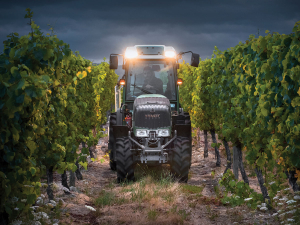There's a bit of glass half full in New Zealand Winegrowers' 2021 vintage report, with "superb" quality wines and abundance of global demand.
"It is encouraging to see that during these uncertain times, consumers continue to choose a premium product they know that they can trust," Chief Executive Philip Gregan told Grape Days guests at three events around the country in June.
But there’s a serve of glass half empty too, with a 19 percent drop in the tonnage of grapes harvested, compared to vintage 2020, and concerns about satisfying that global appetite for New Zealand wine, he said. “While the quality is exceptional, the overall smaller harvest means many of our wineries will face tough decisions over who they can supply in their key markets. There is going to be some supply and demand tension because of this, with the shortfall in the crop equivalent to roughly 7 million 9 litre cases.” That will mean a strong fall in export sales “and we expect in domestic sales of New Zealand wine as well”, he said.
Low yields impacted regions in the centre of the country most, due to frost damage and inclement flowering weather, just when wineries with empty cellars needed a hearty harvest. The country was short of wine well before vintage, after a surge in sales throughout Covid-19 lockdowns around the world, said Philip. “We started the year short of wine, there is no doubt about that.” In the past six months there’s been a 17 percent drop in export volumes, while value is down 6 percent from the peak, he explained. That’s down to both a shortage of supply, and logistical issues around getting product out of the country, with shipping runs few and far from reliable during Covid-19. Those curve balls were already impacting export volume, “and then of course we had vintage”, Philip said.
There were 370,000 tonnes of grapes harvested during the 2021 vintage, with Marlborough responsible for 75.2 percent of that crop, or 269,521 tonnes. That was 21 percent down on 2020, despite continuing vineyard expansions. Marlborough had 550 hectares more producing vineyard than in 2020’s harvest, a 2 percent increase. That means the region is effectively 23 percent down on last year, said Philip.
Marlborough’s shortfall played a major part in the 18 percent drop in Sauvignon Blanc grapes harvested in New Zealand in 2021. With Sauvignon Blanc sales leading last year’s export surge, that’s a big blow to export statistics. North Canterbury, responsible for just 2 percent of the national harvest, was 26 percent down on 2020, while the Wairarapa was down 30 percent and Nelson down 33 percent on 2020 crops. Central Otago bucked that trend, with a 21 percent increase on 2020, and Hawke’s Bay, responsible for 11 percent of the harvest, was only 5 percent down on last year.
“Incomes will be well down on vintage 2020,” Philip told Grape Days audiences. “At the same time as you are facing greatly increased costs, particularly around labour.” That situation was exacerbated by the unreliability of shipping schedules, leaving containers at port when they were expected to be on their way to market, he said. “In short, ships are not turning up where they are supposed to, when they are supposed to.”
An ANZ Research Report on freight challenges and “container chaos” says the companies really struggling to get their goods to market in a timely manner are smaller exporters. “These companies are frequently finding their goods are being bumped, or sailings cancelled - which in the shipping industry is known as a ‘blank sailing’.” The report says it is not clear when the congestion in the global shipping industry will ease, “but the situation is likely to continue well into 2022”.












